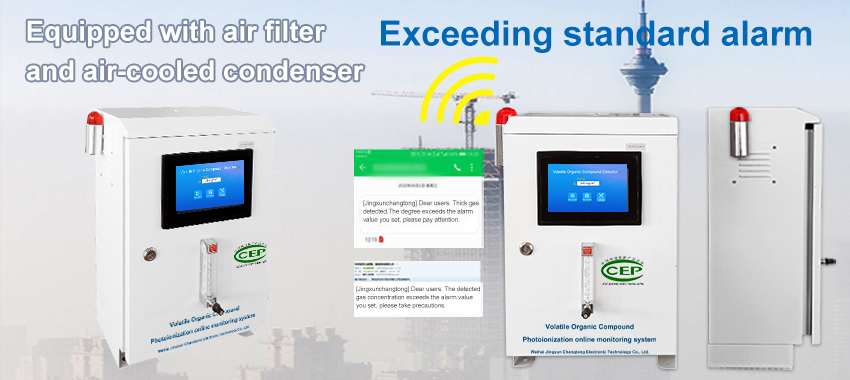Background:
When the concentration of volatile organic compounds in indoor air is too high, it is easy to cause acute poisoning. In mild cases, headache, dizziness, cough, nausea, vomiting, or poisoning may occur. In severe cases, liver poisoning or even coma may soon occur. Some may even be life-threatening. Long-term living indoors contaminated with volatile organic compounds can cause chronic poisoning and damage the liver and nervous system. Cause general weakness, drowsiness, skin itching and so on. Some may also cause endocrine disorders and affect sexual function; benzene and xylene can also damage the system. lead to leukemia. We can use the VOC online monitoring system for online monitoring.

Online monitoring with VOC online monitoring system:
The production equipment is monitored under normal operation. Pollution sources that cause changes in emissions due to production processes. It should be monitored according to the characteristics and period of its changes. When measuring the soot concentration of an industrial boiler, the boiler should be operated at a steady load. Not less than 85% of the rated load. For burners, the measurement time shall not be less than two stoking cycles.
Due to the complexity of the on-site working conditions of fixed pollution sources. The on-line monitoring of fixed pollution sources has certain difficulties, which is mainly reflected in the following aspects. The concentration of the component to be tested is high, generally above the ppm level. Complex working conditions: high content of dust, tar, humidity, gas pressure, corrosive gas, etc. The online sampling point is far away from the analytical instrument. To consider the stability of the sample during the transfer process, the cycle of sample renewal in the pipeline.
The volatile organic compound online monitoring system (VOC online monitoring) can be used to monitor the fugitive emission of volatile organic compounds in the factory boundary and the park. VOC gas monitoring systems can be used to measure total hydrocarbons, methane, non-methane total hydrocarbons and benzene in ambient air. Toluene, xylene and characteristic pollutant concentrations. The monitoring data can be transmitted to the monitoring center in real time to realize the display of pollutant data. Alarm management, data analysis and other management functions. At the same time, customized solutions can be provided for various working conditions and customer needs.
 : +86 155 8830 2704
: +86 155 8830 2704 : jxdziot@gmail.com
: jxdziot@gmail.com
